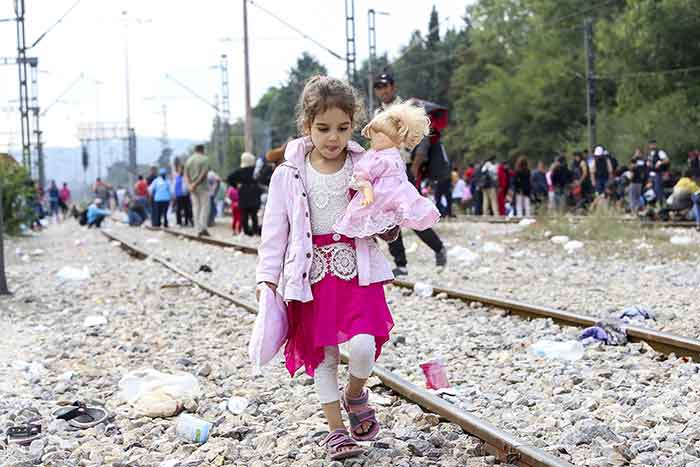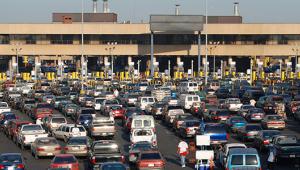web_refugeegirl_shutterstock_320357126.jpg

A young refugee walking in Europe
A report by the think-tank, published today, revealed that since 2014, European governments have spent €1.7bn ($2bn) on tighter border controls. This includes the wall the UK recently announced it would be building in the French port of Calais.
The bulk of funds however have been spent on agreements between the EU and partner countries like Turkey, and to pay for other deterrence measures, which have cost the bloc €15.3 ($17.2bn).
But Marta Foresti, author of the ODI’s report, said that on the surface this has lead to a reduced number of migrants entering the EU. However, the total number of those taking more hidden routes has not been affected, and is likely to increase as people are forced away from the usual channels.
An estimated 330,000 people will arrive in Europe this year through so-called ‘overt’ routes, such as via boat across the Mediterranean, after which they will register with official agencies. This compares to 1.1 million in 2015.
But the ODI’s researchers said a predicted 890,000 asylum claims will be lodged in the EU in 2016, a discrepancy that can be explained by an increase in ‘covert’ means of migration, including travelling on false documents, concealed in vehicles or by over-staying visas.
“These covert routes can be more dangerous and make it harder for governments to monitor migration and design effective responses,” Foresti added.
As a result, the ODI said that the idea that the migration crisis is over is a false impression.
“Increasing legal routes is the only way to be able to predict flows and make pragmatic decisions about how to better manage migration,” Foresti said. “A joined-up European approach is needed as countries cannot address, and effectively manage, migration alone.”
An unprecedented influx of refugees and migrants hit the shores of the EU last year as millions fled wars and insecurity in countries like Syria, Iraq, Afghanistan, and African nations like Eritrea.
It was the continent’s worst refugee crisis since the Second World War, and overwhelmed frontline countries as well as destination states like Germany.
As Foresti points out, the result was a “crisis of politics and solidarity”, with refugees abandoned by many countries and left to endure harsh conditions. Meanwhile, the fragility of the EU’s internal movement policies and asylum systems – and political unity between its member states – was exposed.
But a report by the World Bank and the United Nation’s refugee agency (UNHCR), published yesterday ahead of a UN summit for refugees and migrants taking place on Monday, highlighted that forced displacement is largely a developing world crisis.
The majority of the world’s 65 million refugees, who are fleeing the same 10 conflicts, are hosted by just 15 developing world countries. Overall, poorer nations host 89% of the world’s refugees and 99% of people displaced within states.
The report highlighted that because people typically flee to countries neighbouring their own, Syria’s neighbours, Turkey, Jordan and Lebanon, host 27% of all refugees worldwide.
Pakistan and Iran, which neighbour Afghanistan, host 16%, while South Sudan’s neighbours, Ethiopia, Kenya and Somalia host 7%.
Europe and Central Asia on the other hand host just under 4.5 million refugees and just under 4 million people displaced internally. The number of refugees in European Union countries, even with those that entered the EU in 2015, is still lower than in the early 1990s, according to the report.













